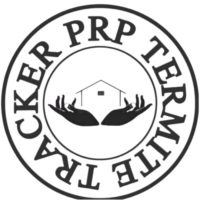
PRP
Wood Borer Pest Control:
Wood-boring pests, such as termites and wood borers (also known as wood beetles), can cause significant damage to wooden structures in homes and businesses. PRP Termite & Tracker Solutions may offer specialized services for controlling wood-boring pests.
- Inspection and Assessment:
- Initial Inspection: The process begins with a detailed inspection to identify signs of wood-boring pest activity, such as tiny holes in wood, frass (powdery wood waste), or weakened structural elements. Technicians may look for beetles, termites, or other wood-destroying organisms.
- Identification of Infestation: Determining whether the infestation is caused by termites, powderpost beetles, or other wood-boring insects is key, as each requires a slightly different treatment approach.
- Treatment Options:
- Termite Treatments: If termites are found to be the culprits, PRP Termite might use chemical treatments, including liquid termiticides around the perimeter of the property or termite bait systems to eliminate the colony.
- Wood Borer Treatments: If the issue involves wood-boring beetles, PRP Termite might use insecticidal sprays or dusts that are directly applied to the affected wood to kill any active beetles. They may also treat surrounding wood to prevent future infestations.
- Localized Treatments: For targeted infestations, PRP Termite may inject or apply treatments directly into the infested areas, such as beams, joists, or furniture.
- Fumigation (if necessary): In severe cases of wood borer or termite infestation, fumigation may be used to ensure all pests are eradicated from the property.
- Follow-up Services:
- Monitoring: After treatment, the company may schedule follow-up visits to ensure that the infestation is fully controlled and that no new signs of activity appear.
- Prevention: PRP Termite may offer additional recommendations to prevent future infestations, such as moisture control, wood sealing, and regular inspections.
Wood Borer Pest Control at Tracker Solutions:
- Inspection and Evaluation:
- Tracker Solutions would likely conduct a thorough inspection to identify wood-boring pests and assess the extent of the infestation. This includes checking wooden beams, flooring, furniture, and other wooden structures for signs of damage.
- Identifying the specific pest (such as wood-boring beetles or termites) is crucial for determining the correct course of action.
- Treatment Options:
- Wood Treatment: For wood-boring beetles, Tracker Solutions might apply specialized insecticides or dusts to the infested wood. These treatments often penetrate the wood and target larvae and adult beetles.
- Termite Control: If termites are identified as the problem, Tracker Solutions might offer termiticide treatments, termite baiting systems, or localized spot treatments to eradicate the colony.
- Structural Treatment: In some cases, Tracker Solutions might inject insecticides into the wood to treat heavily infested areas, effectively targeting pests inside the wood itself.
- Exclusion and Prevention:
- Moisture Control: Since wood-boring pests thrive in moist environments, Tracker Solutions may suggest ways to reduce moisture levels in affected areas, including improving ventilation or sealing cracks and leaks.
- Preventive Coatings: Applying protective coatings to wood surfaces may help prevent future infestations, as these coatings can deter pest activity.
- Follow-up Monitoring:
- Re-inspection: Tracker Solutions may schedule follow-up visits to check for re-infestation and ensure that the treatment was successful.
- Ongoing Prevention Plans: If you are in a high-risk area for wood-boring pest activity, Tracker Solutions may offer recurring treatment plans to keep pests at bay.
Common Wood Borer Pests:
- Termites: These are the most destructive wood-boring pests. They can cause significant structural damage by feeding on wood.
- Powderpost Beetles: These beetles can cause damage to furniture, beams, and hardwood flooring by tunneling into the wood and laying eggs.
- Old House Borers: Larger beetles that also target structural wood.
- Anobiid Beetles: These beetles primarily target seasoned wood and cause extensive damage by burrowing.
Treatment Methods for Wood Borer Pests:
- Liquid Termiticides: Used for termites to create a barrier around the structure.
- Fumigation: A highly effective method for severe infestations, particularly when dealing with powderpost beetles.
- Insecticidal Dusts or Sprays: Applied directly to the affected wood for wood-boring beetles.
- Baiting Systems: For termites, baiting systems can be installed around the perimeter of your property to attract and poison termites, eliminating the colony over time.
Preventive Measures:
- Seal Wood: Sealing wooden surfaces with protective coatings can prevent wood-boring pests from attacking.
- Control Moisture: Reducing moisture levels in basements and attics can discourage wood-boring insects from infesting the wood.
- Regular Inspections: Regular professional inspections can catch early signs of wood-boring pest activity before it becomes a major issue.

